E-commerce Website Redesign
Enterprise SEO Strategies
Optimize your website for search engine visibility
There are numerous strategies to optimize your enterprise website for search engine visibility and findability. Some enterprise eCommerce SEO techniques include internal linking, targeting competitive keywords that rank in positions 11 to 20, grouping content into categories, and refreshing content.
Performing an enterprise SEO website audit is a great way to benchmark the current site health with an eye toward tracking improved rankings, traffic, and conversion rates. The following are some of the services, strategies, and tactics to consider for a large-scale eCommerce website with your enterprise SEO company.
Quick Start Marketing Automation Seminar – Keynote Speech
Learn how to quickly launch marketing automation nurture campaigns without getting bogged down by overthinking the process in platforms such as Act-On, Eloqua, Marketo, Aprimo, and Pardot.
Watch the Keynote Speech
Internal linking
When implemented correctly, internal links can strengthen your content marketing program. These links lead to pages within your domain that are related to one another. In addition to passing link juice, internal links can also provide context for both users and search engines. By providing context for users, internal links can tell search engines where to rank a page. And because users can easily locate content within the same domain, internal linking can help you rank more pages in search engines assisted by the XML sitemaps.
First, understand how your internal linking strategy works. There are two basic approaches: centralized and decentralized. Centralized sites are typically content-heavy and agency-style sites, while decentralized sites scale with inventory and scale up as needed. Decentralized sites, by contrast, can scale to meet the needs of a variety of business models and sizes. Internal linking can help you improve your overall link graph and boost your SEO performance.
In general, a keyword-optimized internal linking strategy is highly beneficial to your business. It can help you boost your main pages while also backing up supporting pages. It may seem like a complicated process at first, but it pays off when you see your newly published pages performing better. Eventually, you’ll find that internal linking has numerous advantages for your website. If done properly, it can even boost sales and revenue.
Anchor text for internal links is important as it indicates topicality. When used appropriately, anchor text for internal links can improve the customer’s experience. The anchor text of an internal link can convey contextual relevance, which is important for enhancing a page’s ranking. A good anchor text will help make your website appear less spammy and will increase the chances of it ranking for a secondary keyword. But remember too many links on a page can dilute the value of the content.

Targeting keywords that rank in positions 11 to 20

Overdrive Interactive generated this image in part with OpenAI’s DALL·E on 2022-10-05
For the best results, aim for striking distance keywords. Striking distance keywords are low-hanging fruits; these are the terms and phrases that rank in positions eleven to twenty in Google. They have the best chance of driving traffic to your website and increasing conversions by moving them closer to the first page. You can check your website’s rankings manually or you can identify these keywords with a keyword ranking report using enterprise SEO tools, such as BrightEdge, Conductor, or Ahrefs. Keep in mind that some pages in position eleven or twenty may also rank on page one. So, use your judgment.
Once you’ve determined the core target terms for your website and benchmarked these positions, you can begin optimizing the on-page aspects of your content and meta data by injecting your target terms in these. While meta data does not directly affect ranking, they can influence whether or not users click through to your site. In addition, Google frequently changes titles and meta descriptions. A general rule of thumb for page titles is around 60-70 characters and 150-155 characters for meta descriptions.
This is an important part of your enterprise SEO strategy. So, focus on your target keywords and create useful content around them.
Using a SEO tool to determine the percentage increase in search traffic after changing position can be helpful. A move from position eleven to position six resulted in a 273% increase in traffic, while one from position twenty to 16 resulted in a marginal 50% increase. Of course, the percentage increase may differ for each keyword position depending on the way the clicks are distributed.
Grouping content into themes and categories
A common way to separate and organize content for a website is to use categories. Folders can work just like a subdirectory, except for a few details. Ideally, each segment should return the same content as a search on a relevant keyword, such as horse racing for the Grand National. If different departments are focusing on different aspects of the same keyword, similar but different content can occur, resulting in multiple unique pages on the same topic that live in different folders. Think products vs services vs data sheets all covering the same core target term but with different user intent models and purposes for the content to exist.
One method to improve the page speed of an enterprise website is to group content into subdomains. While this is not as straightforward as dividing content by folders, this method can increase overall website speed. Some of the strategies for boosting page speed include optimizing images and reducing redirects. By doing this, you can increase the number of pages without having to manage them all at once. Further, this method improves the user experience, boosting engagement and ranking potential.
For successful enterprise SEO, the content marketing team needs to develop a content strategy. The success of the campaign depends on high-quality content, and the efforts of the content marketing team should be dedicated to this task. In addition, brand content guidelines should be developed for enterprise SEO strategies, defining the manner in which the brand is represented on a website. This will help ensure uniformity and quality of content.
The structure of a website determines the level of search engine visibility. For example, a website may be organized in different sections, each targeting a different audience. A site with multiple subdomains may also benefit from a ccTLD, which translates to a lower cost, but requires additional maintenance. Subdirectories also help consolidate domain authority. When dealing with multiple languages, subdomains can help ensure a better SEO.
Refreshing content
Refreshing content for enterprise SEO strategies is an important component of a successful content marketing strategy. Refreshing content that is already established and popular can be a great way to increase search engine rankings. However, this method should be done carefully. Refreshing content must be scalable. If you’re using the same content for multiple sites, you may have to refresh different content for each site. Make sure that you focus on pages that have the best potential for SEO.
A good way to determine whether your content needs to be refreshed is to analyze your business priorities. Are there any seasonal products or services that need new content? Are you planning any new product launches in the near future? You can also refresh existing content if there’s an upcoming launch. To do this, you can analyze which pages need to be refreshed and which ones don’t. You can also use an enterprise SEO platform to automate content refresh.
There are many different methods for refreshing content. Some companies use a Content Refresh Pyramid to plan and implement new content. You can even outsource this task to a third party. Outsourcing the process of updating your website content is a great option if you don’t have the time or expertise to do it yourself. Outsourcing this work will allow you to focus on your core business, such as products and services. However, keep in mind that it’s important to follow a strict strategy to optimize your content.
Aside from creating content that is optimized for SEO, there are other ways to improve a website’s topical authority. Keeping content fresh and up-to-date is a key part of an enterprise SEO strategy. Google loves fresh and relevant content so be sure to update your content regularly. Also, if you have an online blog or a blog, consider writing articles about a particular topic. Adding new content and highlighting existing articles with internal linking is a great way to boost your enterprise SEO strategy.
Content development
Content development and satisfying content consumption along the buyer’s journey by building out new pages is a critical component of your enterprise SEO strategy. Although SEO experts are responsible for keyword research and boosting the quality of website code, without compelling content, all efforts fall flat. To make sure that content is on point, it’s a good idea to use internal subject matter experts that reside in your organization to start. They should optimize content for ranking and experiment with various types of content asset types (PDFs, Audio, Video) to see which one works best.
To make SEO effective, enterprise site owners must have a solid understanding of how the process works. To make it work efficiently, cross-team collaboration is essential. Content creators should work closely with the sales department and customer experience team. This approach increases the likelihood of success and fosters open communication among team members. This helps to develop a robust SEO strategy. Listed below are some best practices for content development as part of enterprise SEO strategies.
Developing deep authoritative content
When developing deep authoritative content for your enterprise website, you must keep Google’s Quality Rater’s rules in mind. Unlike the shallow type of content that tends to be persuasive, deep tactical content allows you to showcase your products and services. You need to develop content that will address any customer support questions highlighted using subject matter experts.
Deep, authoritative content is important for enterprise SEO because it not only drives organic search traffic but also facilitates trust building. A visitor feels like they are developing a relationship with the author. And once the consumer trusts you, they will be more likely to buy your products. To achieve this goal, your content should be original, passionate, and exhibit expertise in your topic. Adding your enterprise’s tone of voice to the mix will make it much easier to build a brand with your products.
Technical SEO
Search engines give favorable treatment to websites at a certain level of technical expertise – making a website secure, responsive, faster, and easier to crawl are the pillars of sound enterprise technical SEO. This strategy can be difficult to implement because enterprise sites are typically large organizations that leverage complex IT infrastructure and custom website technologies. Despite this complexity, this type of strategy requires advanced planning to avoid making costly mistakes and wasting valuable time.
Search engine crawlers evaluate web pages on a multitude of factors and by improving your technical SEO you help search engines crawl and understand your site better, leading to improved rankings. Here are the questions you need to ask yourself to make sure your website is correctly setup for good enterprise-level technical SEO:
Does my site use an SSL certificate?
An SSL certificate is a security layer that authenticates a website’s identity and enables an encrypted connection. You can tell a site is using an SSL certificate because the URL will start with ‘https://’. It tells users that your site is secure and will protect their information. SSL certificates are cheap and easy to install and is a necessary component of a technically sound enterprise SEO strategy.
Is my site mobile-friendly?
A responsive website is a website that adjusts to the screen size of the user for easy navigation and readability. With the introduction of Google’s mobile first indexing, they showed how important it is for your site to be mobile-friendly. Your site might not even get indexed if it isn’t. Use Google’s mobile-friendly test to check how mobile-friendly search engines consider your website.
Is my site fast?
Research shows that 53%of visitors to a website will leave if it doesn’t load within three seconds. Search engines know that slow web pages offer a worse user experience so slower web pages end up further down the SERP. Test your site speed using PageSpeed Insights or GTMetrix and implement as many recommendations as you can.
Is it crawlable for search engines?
Search engines use robots to crawl your site and learn the architecture and content of the site. There are several things that make your site easy to crawl including a sitemap, a great internal linking structure, and the robots.txt file. These all need to be set up according to best practices.
Website structure
One of the enterprise SEO strategies involves optimizing your website structure. A well-structured website organizes its content by common characteristics or taxonomy. To make your website easy to navigate, you should plan your content by theme or category. For example, if you sell different types of shoes online, your product pages should be organized by category and theme. This theme-structured content hierarchy helps users easily find the information they need. While some SEO sharks may tout silo-structured content systems, they simply don’t work over the long run.
A good website structure is one that serves the needs of your audience and works well for your business. The structure you use should be logical and align with the core ideas of your business. If your site is a database or has a lot of data, a hierarchical structure would work best. However, if your site has chronological or categorical data, a sequential structure is ideal. To create a better website structure, you should conduct research and understand the psychology behind your target audience for better behavioral SEO and user search intent.
Local SEO benefits from a good site architecture in driving users to the proper locations for brick-and-mortar organizations. State, city, and street-level data captured by location schema and long/lat assist in mapping for the local 3 pack in Google search results.
Schema code
Implementing schema markup is a key component of your enterprise SEO strategy. The right structure in place for your organization’s website will increase the chance of your site ranking well and generating more conversions. Let’s look at how this code can benefit your online business. First of all, it will increase your site’s credibility with search engines, you’ll increase the quality of traffic to your services pages, and you’ll improve your chances of appearing in Google News and appearing in suggestions for in-depth articles.
Schema markup is HTML code that tells search engines what a page is about, creating a rich snippet in the search results that is easier to read. Search engines have evolved from processing information at face value, and providing to-the-point answers is no longer automatic. When search engines first emerged, users had to carefully phrase their search queries, adding words to get the results they wanted. Now, with the use of schema markup, search engines can understand the content of a website and reward it accordingly. Schema is important for hyperlocal enterprise SEO as it applies to NAP information, eCommerce product listings and more.
Schema markup can be created manually or by using a tool like Merkle. Some examples of schema you should be implemented on an enterprise website include Organization, Article, FAQ, How-to, and Local Business schema for organizations with brick-and-mortar stores.
Hreflang and canonical tags
You may have heard of canonicals and hreflang tags. Both of these meta tags tell search engines which version of your page is the “main” one. However, while these tags have a few benefits, they are not as effective as they might seem. In fact, Google may ignore canonicals and hreflang.
Hreflang tags are an important part of any international SEO program for global corporations and their websites. If you have multiple versions of the same page in different languages, you can use the hreflang tag to help serve the correct version of a page to the users. Catering to the native tongue of the users also improves their experience and often results in fewer people clicking away from your page.
The main benefit of canonicals is their ability to help search engines pick the most representative version of a page. This can lead to an increase in organic traffic and ultimately, business benefits. Canonicalization is a great way to make sure search engines index your most relevant page and not a sub-page of the same content. It is a great way to ensure that the main version of a page is the one that users are most likely to find and click on.
In addition to allowing search engines to index both versions of a page, canonical tags can be helpful in regional optimization. By including them in the title, meta description, and body content, they tell search engines which version to index and deliver. Canonicals are also important in promoting a master page in the search results. These tags should be used in combination with one another. When used correctly, they can increase your site’s search engine rankings.
For a new website, internal linking may be a given, but it’s crucial to consider the impact of an internal linking strategy on your website before making important strategic decisions. A thorough understanding of internal linking is essential before making critical decisions about how to improve your SEO. The best way to gauge the status of internal linking is to use Google Analytics to understand how deep your links go. Ideally, the most important pages of your website should be accessible within three clicks from the home page.
Internal linking strategies can help your site rank higher. If a user has to click on a link three times before reaching their desired destination, they’re not likely to do so. And if it takes more than three clicks, Google isn’t likely to give it much importance. But if you’ve made it easy for customers to access your pages, internal linking will increase their likelihood of finding and clicking on your website.
Working with a team
The key to effective enterprise SEO is working with a multidisciplinary team. While SEO experts are tasked with optimizing your site, developers, sales staff, and customer experience specialists should all be involved in the strategy. Working with a cross-functional team will increase your chances of success and will encourage your team to share ideas and coordinate accordingly. Ultimately, this will help you craft an enterprise SEO strategy that maximizes your brand’s visibility.
One benefit of working with a multidisciplinary team for enterprise SEO is the ability to keep track of current SEO trends. In addition to monitoring changes in Google algorithms, an enterprise SEO team can keep your site relevant by keeping abreast of website trends. For example, by keeping track of new keywords and website trends, an enterprise SEO team will stay ahead of the curve and avoid the pitfalls of outdated strategies. This way, your brand will remain relevant in the eyes of consumers, and your enterprise SEO efforts will be a huge hit.
Another benefit of working with a team for enterprise SEO strategies is the coordination of marketing efforts. If your marketing team works together, your efforts can produce big results and set your company apart from competitors. If your team works on marketing strategies separately, they could be wasting their time, energy, and money. If you have a social media department that is not optimized for SEO, you may be losing out on a massive opportunity to boost your revenue.
Using an enterprise SEO strategy requires careful planning and execution. An enterprise SEO strategy should include a macro-level on-page strategy that leverages existing web assets. These assets should support specific KPIs and top-level visibility. Additionally, you should make sure every page has specific meta-data and revamp its content to match the recommendations of your SEO team. Taking care of this type of strategy requires a substantial amount of time and requires automation to execute it effectively.
Enterprise SEO Services
When it comes to the development of SEO strategies for an enterprise-level website, there are several different ways to implement them. Incorporating SEO into the website development process not only improves the user experience but also enhances engagement metrics, which may contribute to improved search performance. When a company hires an enterprise SEO service provider to develop its website, the team also helps web developers build SEO into the DNA of its site. The result is a more agile, better-structured site that provides a positive user experience and achieves high brand performance.
Enterprise SEO Strategies FAQs
What is enterprise SEO strategy?
An enterprise SEO strategy applies to large-scale B2B or B2C eCommerce or service-based websites and focuses on optimizing the website to rank higher in the search engines, drive more organic traffic to the site, and ultimately increase sales and conversions for the business.
What are the top 3 enterprise SEO strategies?
3 of the top enterprise SEO strategies include the following and should be addressed in a comprehensive website audit:
- Keyword Research and Interlinking
- Content Development and On-Page Optimization
- Technical Optimization
What are the 4 types of enterprise SEO strategies?
4 of the most common enterprise SEO strategies include:
- On-page (on-site) SEO – keyword targeting, interlinking, meta data, image optimization (or other media), and content development.
- Off-page (off-site) SEO – competitor analysis, link-building, guest post blogging, H.A.R.O, and press distribution.
- Technical SEO – site speed and performance, mobile-friendliness, HTTP errors, faceted navigation, duplicate content, broken links, schema and structured data markup, security issues, and much more.
- Hyperlocal SEO – local keyword research, Google My Business profile optimization, directory listings, customer review management
Get in Touch
Overdrive is Passionate About Your Success!
Find out how Overdrive helps companies grow their online revenue and branding channels through programs that make real connections with their target audiences. In Overdrive’s capabilities presentation, you will see real-life case studies from ROI-driven companies.































